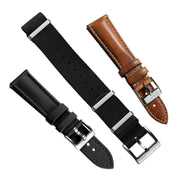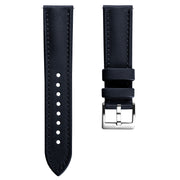If you've been anywhere near the watch world over the past year or two, you’ve probably seen a million and one reviews of the Christopher Ward Bel Canto. Yes, it’s award-winning. Yes, it chimes. And yes, it’s pretty amazing. But now that the dust has settled, the question is this: where do they take it next?
Enter the Bel Canto Classic, shown here in the new “Verde” green. A lot of people are probably wondering whether this is a true evolution or simply a new colour on an existing platform.
In this article, we’ll take a closer look at what has changed, what has stayed the same, and whether the Classic is the one you should go for.
Christopher Ward Bel Canto Classic Vs Original
To begin with, there’s something fun about how Christopher Ward names its models and colours. They like to throw in different languages, intentionally or not. The Bel Canto is a prime example. The name translates from Italian as “beautiful singing”, and the watch certainly made a bold statement when it first launched. This wasn’t just another new release. It was more like a mic drop.
Typically, striking complications like this chime module come with a five-figure price tag. But Christopher Ward managed to bring the concept to market in a far more accessible way. They started with their JJ01 chiming module, refined it, and mounted it onto a tried-and-true Sellita SW200. It completely changed how many collectors saw the brand. They weren’t just the “great value” guys anymore. They had become serious innovators.
So how does the new Classic compare? The most obvious change is in the design and finishing. The original Bel Canto featured a subtle sunburst dial, clean and simple. The Classic, by contrast, goes all in with craftsmanship, featuring a laser-etched guilloché pattern that definitely grabs more attention. It’s more detailed, more eye-catching, and feels like a chance to show off what the brand can really do.
Then there’s the time display subdial. The original used baton indices with lume for legibility and a more contemporary style. The Classic dials things back—literally. It opts for Roman numerals and removes the lume entirely. Some people have said they actually find this layout more legible, and it certainly fits with the more traditional aesthetic.
Texture is another big difference. The original has a smooth, elegant dial that leans into minimalism. The Classic, on the other hand, adds visual depth and plays with light thanks to that etched pattern. Which one’s better? That depends on your style. Are you into clean simplicity or intricate detail?
One change that might not be immediately obvious is the crystal. The original came with a flat sapphire crystal, whereas the Classic has been upgraded to a box-style crystal, still sapphire but designed to emphasize the retro, more classical look. The way it catches the light gives the watch a different personality that’s hard to appreciate in photos alone.
There’s also a more divisive detail: the chime on-off indicator. On my original Bel Canto, the indicator arrow is a subtle black. On the Classic, it’s bold red. Some might like the extra pop of colour, but I personally prefer the understated look. That said, this isn’t actually a difference between the Classic and the original specifically, but more of a variation across the entire Bel Canto range. Some models use red, others don’t.
While we’re on the subject of changes, it’s worth talking availability and pricing. When the original Bel Canto launched, demand was so high that Christopher Ward couldn’t ship them out fast enough. Waitlists and long production lead times became the norm. This kind of buzz wasn’t something the brand had dealt with before, but to their credit, they’ve since scaled up their production facilities to better meet demand.
Naturally, some of the upgrades in the Classic have affected pricing. The original starts at £3,195 on leather and £3,530 on bracelet. The Classic comes in slightly higher, at £3,495 on strap and £3,745 on bracelet. Not a huge jump, but something to consider if you’re weighing both options.
There’s no question that the Bel Canto raised the bar for value in mechanical watchmaking and helped elevate Christopher Ward to near-superstar status among collectors. But which version is better? If you want something modern, crisp and versatile, the original remains an outstanding pick. Its dial is clean, understated, and beautifully balanced.
If you prefer more texture, a touch of vintage flair, and that slightly domed crystal, then the Classic might be your winner. Personally, I’m still leaning towards the original, partly due to that quiet elegance and perhaps also due to a little bias as an early adopter. That said, I am smitten with the green-blue tone of the Classic, which catches the light like bird feathers and shifts subtly depending on your angle. It’s gorgeous and I wouldn’t turn it down.
In the end, it’s a close call. Both watches offer something special. But now I want to hear from you. Do you own a Bel Canto? Are you team original or team Classic? Let me know in the comments.




















